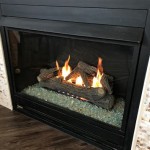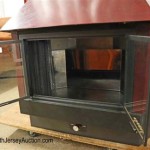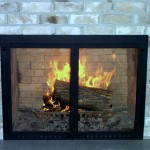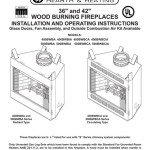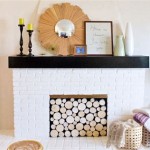```html
Understanding Gas Fireplace Gravel
Gas fireplace gravel, also sometimes referred to as lava rock or decorative rock, plays a significant role in the aesthetics and functionality of gas fireplaces. While often overlooked, this component contributes to the overall efficiency, safety, and visual appeal of the appliance. A thorough understanding of the different types, purposes, and maintenance requirements of gas fireplace gravel is essential for homeowners and professionals alike.
This article provides a comprehensive overview of gas fireplace gravel, covering its composition, benefits, selection criteria, installation process, and essential maintenance practices. The information presented aims to equip readers with the knowledge necessary to make informed decisions regarding the use and upkeep of this crucial fireplace element.
The Composition and Purpose of Gas Fireplace Gravel
Gas fireplace gravel is typically composed of natural materials, primarily volcanic rock or manufactured ceramic composites. Lava rock, a common choice, is formed from cooled molten rock and possesses a porous structure. This porosity contributes to its ability to distribute heat evenly and withstand high temperatures. Manufactured ceramic composites are often used as alternatives, offering similar heat-resistant properties and aesthetic options. These materials are chosen for their ability to withstand the extreme heat generated by the gas fireplace burner without degrading or releasing harmful substances.
The primary purpose of gas fireplace gravel is to diffuse the flame and create a more realistic and aesthetically pleasing fire appearance. Without the gravel, the flames from the burner would appear as concentrated jets of gas, lacking the natural flickering and spreading effect of a wood-burning fire. The gravel acts as a medium through which the gas flames spread and interact, producing a more natural and inviting ambiance. The gravel also serves to hide the burner assembly, concealing the mechanical components and enhancing the visual appeal of the fireplace.
Furthermore, the gravel aids in heat distribution within the fireplace. The porous structure of the lava rock or ceramic composite allows for the absorption and re-radiation of heat, contributing to a more even and consistent temperature throughout the firebox. This even heat distribution can improve the overall efficiency of the fireplace, maximizing the heat output and reducing energy consumption. The gravel also protects the burner from direct exposure to drafts or other environmental factors that could affect its performance.
In some fireplace designs, the gravel may also contribute to the air-to-fuel ratio. The arrangement of the gravel can influence the airflow around the burner, ensuring optimal combustion and minimizing the production of soot or other byproducts. This is particularly important in closed-combustion systems where the air supply is carefully regulated.
The selection of appropriate gravel is crucial for optimal performance and safety. The size, shape, and density of the gravel can affect the flame pattern, heat distribution, and overall appearance of the fire. Using the wrong type of gravel can lead to uneven burning, excessive soot production, or even damage to the fireplace components.
Selecting the Right Gas Fireplace Gravel
Choosing the correct gas fireplace gravel is a critical step in ensuring the safety, efficiency, and aesthetic appeal of your gas fireplace. Several factors need to be considered during the selection process, including the type of fireplace, the desired aesthetic, and the specific recommendations of the fireplace manufacturer.
The fireplace type is the first consideration. Different gas fireplaces are designed to work with specific types of gravel. Direct vent fireplaces, for instance, often require a finer grade of gravel to ensure proper ventilation. Ventless fireplaces may have different requirements for airflow and heat dissipation, necessitating a specific type of rock or ceramic composite. Refer to the manufacturer's instructions for your specific model to determine the recommended type of gravel.
The desired aesthetic is another important factor. Gas fireplace gravel is available in a variety of colors, shapes, and sizes, allowing for customization to match the decor of the room. Lava rock typically comes in shades of black, brown, and reddish-brown, offering a natural and rustic appearance. Ceramic composites, on the other hand, can be manufactured in a wider range of colors, including white, gray, and even metallic finishes. The choice of color should complement the fireplace surround and the overall style of the room.
The size and shape of the gravel also affect the appearance of the fire. Larger pieces of gravel tend to create a more dramatic and prominent flame, while smaller pieces produce a more subtle and diffused effect. The shape of the gravel can also influence the flame pattern. Irregularly shaped pieces create a more natural and unpredictable flame, while uniformly shaped pieces produce a more uniform and controlled flame.
It's crucial to purchase gravel specifically designed for gas fireplaces. Using gravel from other sources, such as landscaping rocks, can be dangerous. These rocks may contain impurities that can release toxic fumes when heated or may explode due to trapped moisture. Gas fireplace gravel is specifically treated to remove impurities and ensure that it is safe for use in high-temperature environments.
The quantity of gravel required will depend on the size and design of the fireplace. A general rule of thumb is to use enough gravel to cover the burner evenly, without burying it completely. Overfilling the fireplace with gravel can restrict airflow and affect the efficiency of the burner.
Finally, consider the longevity and durability of the gravel. Lava rock is generally durable and long-lasting, but it can eventually crumble or break down over time. Ceramic composites are typically more resistant to wear and tear, but they may be more expensive. Choosing a high-quality gravel from a reputable supplier will ensure that it lasts for many years without needing to be replaced.
Installation and Maintenance of Gas Fireplace Gravel
Proper installation and maintenance of gas fireplace gravel are essential for ensuring the safe and efficient operation of the fireplace. Following the correct procedures will help to maximize the heat output, prevent potential hazards, and prolong the lifespan of the gravel and the fireplace itself.
Before installing the gravel, ensure that the gas supply is turned off and the fireplace is cool. This is a crucial safety precaution to prevent accidental ignition of the gas or burns from touching hot components. Refer to the manufacturer's instructions for your specific fireplace model for detailed safety guidelines.
Clean the firebox thoroughly before adding the gravel. Remove any dust, debris, or old gravel that may have accumulated over time. A vacuum cleaner or a soft brush can be used for this purpose. Avoid using harsh chemicals or abrasive cleaners, as these can damage the fireplace components.
Distribute the gravel evenly over the burner, ensuring that it is covered but not completely buried. The burner should be visible, and the flames should be able to spread freely through the gravel. Avoid piling the gravel too high, as this can restrict airflow and affect the efficiency of the burner. Follow the manufacturer's recommendations for the appropriate amount of gravel to use.
After installing the gravel, turn on the gas supply and ignite the fireplace. Observe the flames to ensure that they are burning evenly and consistently. If the flames are uneven or flickering excessively, adjust the position of the gravel until a stable and uniform flame pattern is achieved. It may be necessary to experiment with different arrangements of the gravel to find the optimal configuration for your fireplace.
Regular maintenance is crucial for keeping the gas fireplace gravel in good condition. Over time, the gravel can accumulate dust, soot, and other debris, which can affect its performance and appearance. Clean the gravel periodically using a vacuum cleaner or a soft brush. Avoid using water or other liquids to clean the gravel, as this can cause it to crumble or break down.
Inspect the gravel regularly for signs of damage or deterioration. If you notice any cracks, chips, or crumbling, replace the affected pieces of gravel. This will help to maintain the aesthetic appeal of the fireplace and prevent potential hazards. It is also advisable to replace the entire gravel bed every few years to ensure optimal performance and safety.
During periods of inactivity, such as during the summer months, cover the fireplace with a protective cover to prevent dust and debris from accumulating inside. This will help to keep the gravel clean and extend its lifespan.
If you notice any unusual odors or smoke coming from the fireplace, turn off the gas supply immediately and contact a qualified technician. This could indicate a problem with the burner, the gas supply, or the gravel itself. Do not attempt to repair the fireplace yourself unless you are a qualified professional.
By following these installation and maintenance guidelines, you can ensure that your gas fireplace gravel remains in good condition and provides years of reliable performance and aesthetic enjoyment.
```
Fire Pit Glass Everything You Need To Know

Lava Rock 10 Things To Know About Fire Pit Rocks Buyer S Guide 2024

Backyard Fire Glass Landscaping Rocks

Modern Fire Pits Toppings Part 2 The Options Firepits

11 Smart Questions To Ask When Fire Glass

Media Options Linear Fireplaces Flare

Fire Pit Ideas And Inspiration Forbes Home

Element4 Tenor 140 Fires Of London Ltd Gas Fire

Fire Pit Landscaping Ideas Town Country Living

Fall By The Fire Clear Creek Landscapes
Related Posts


